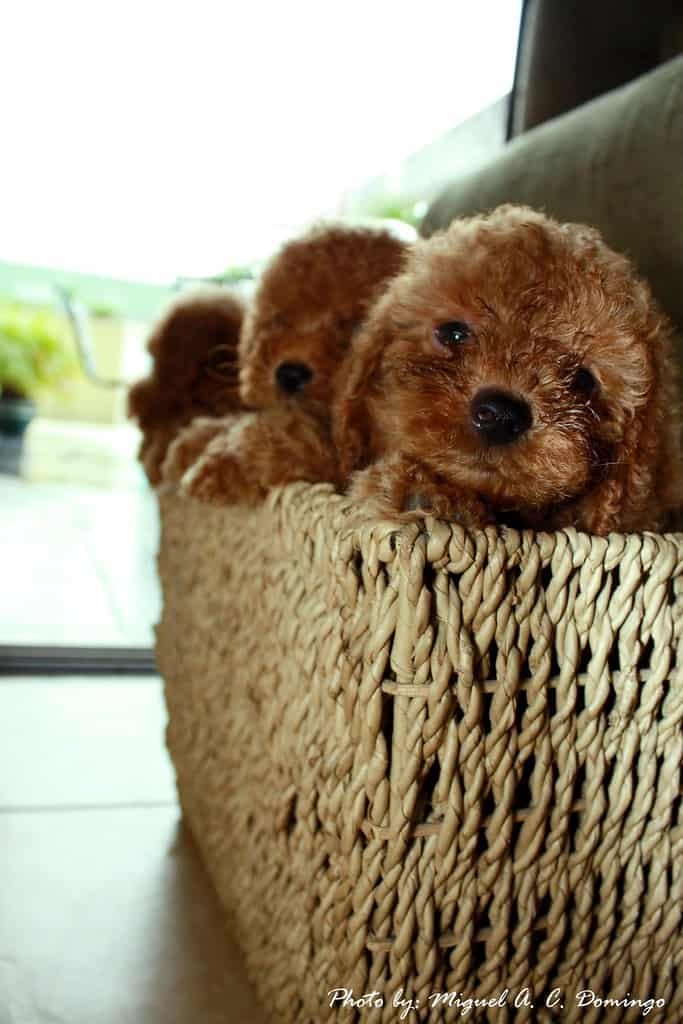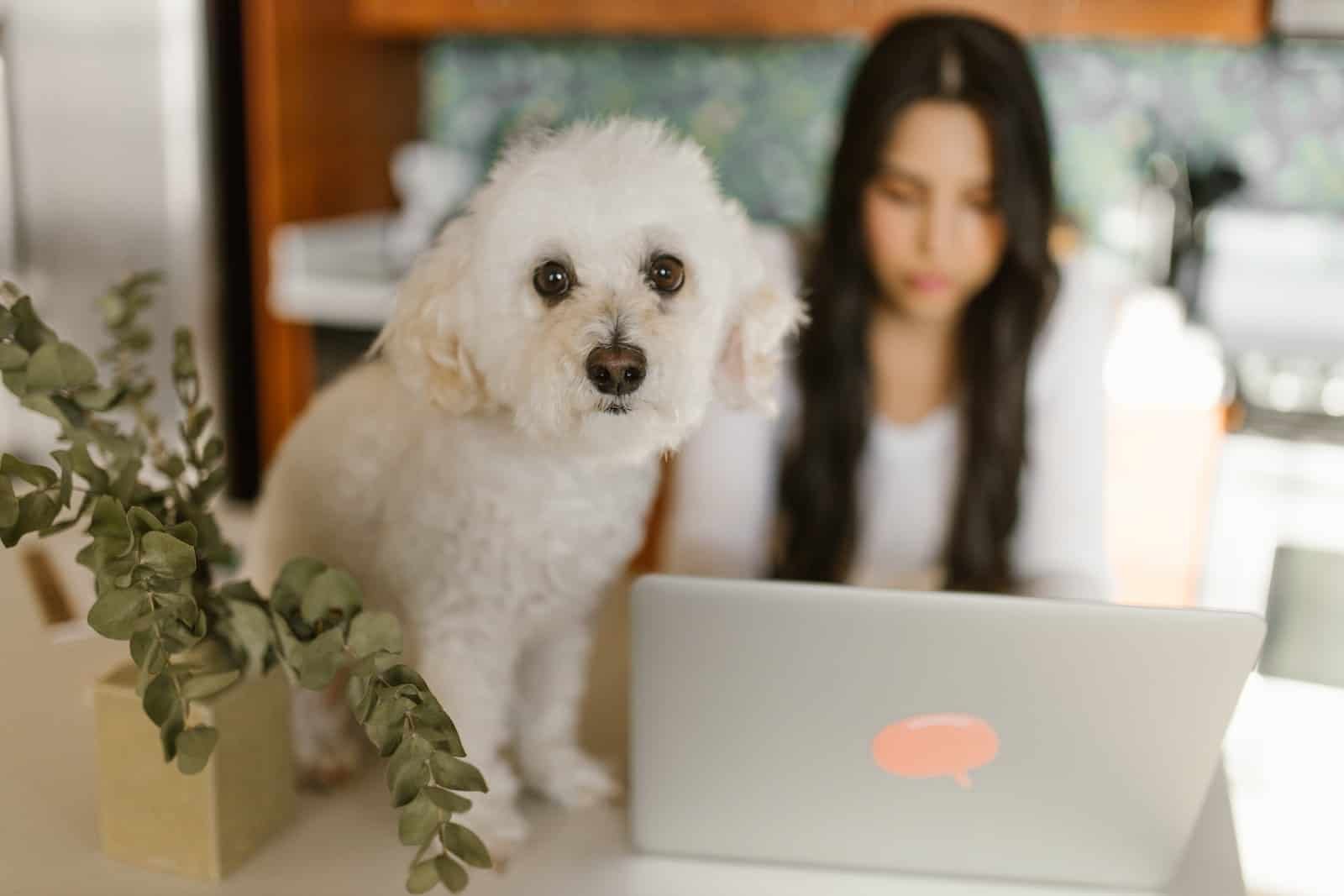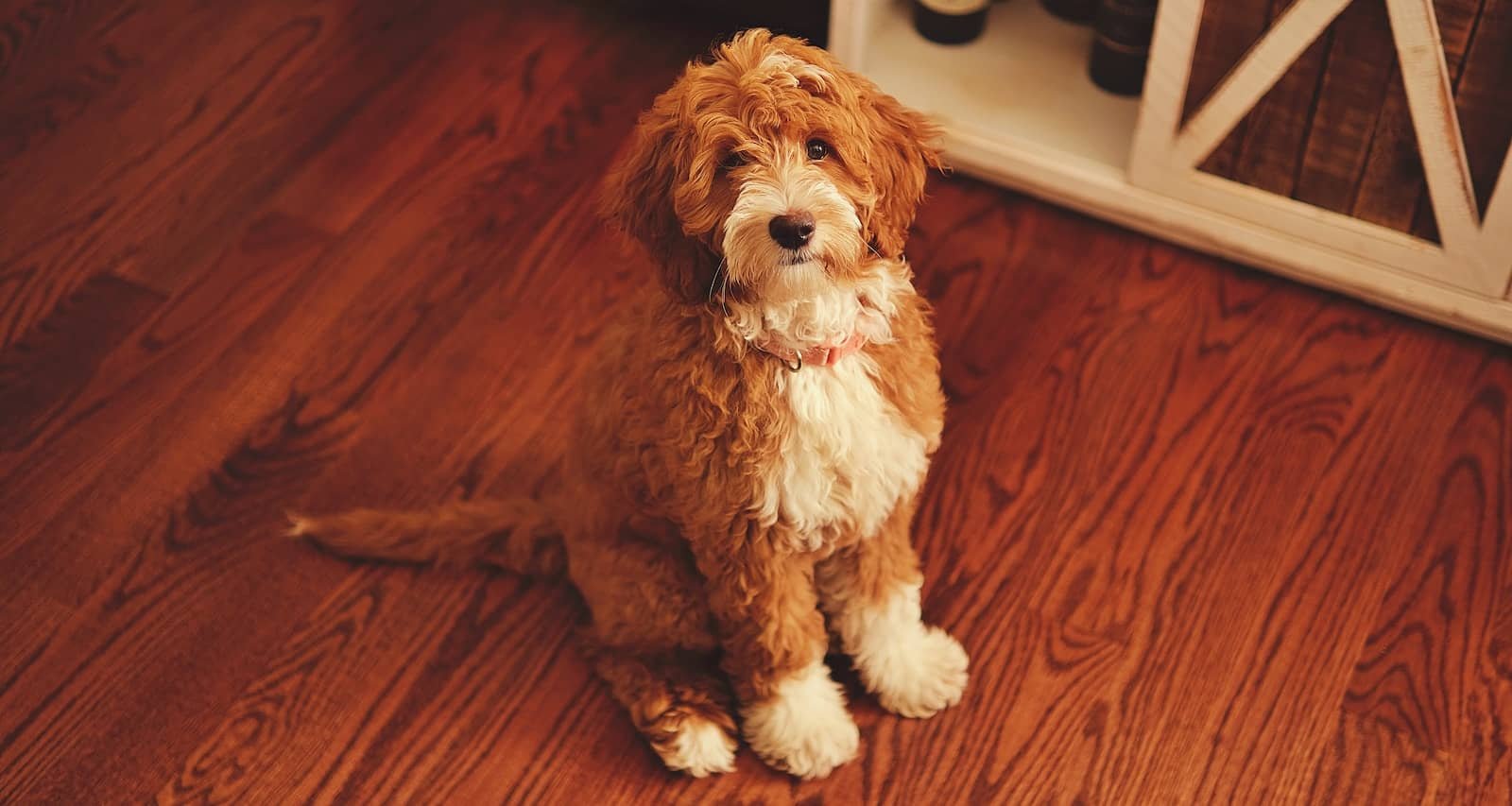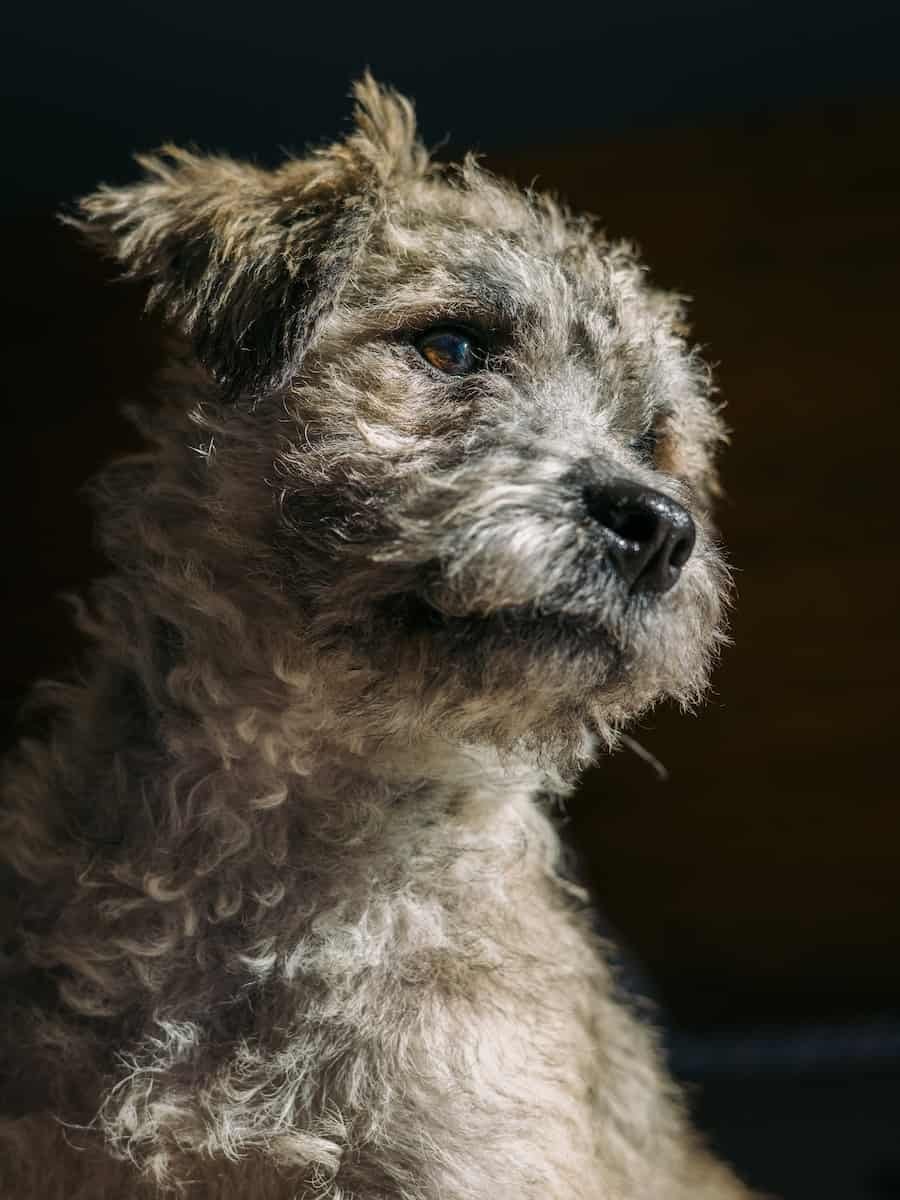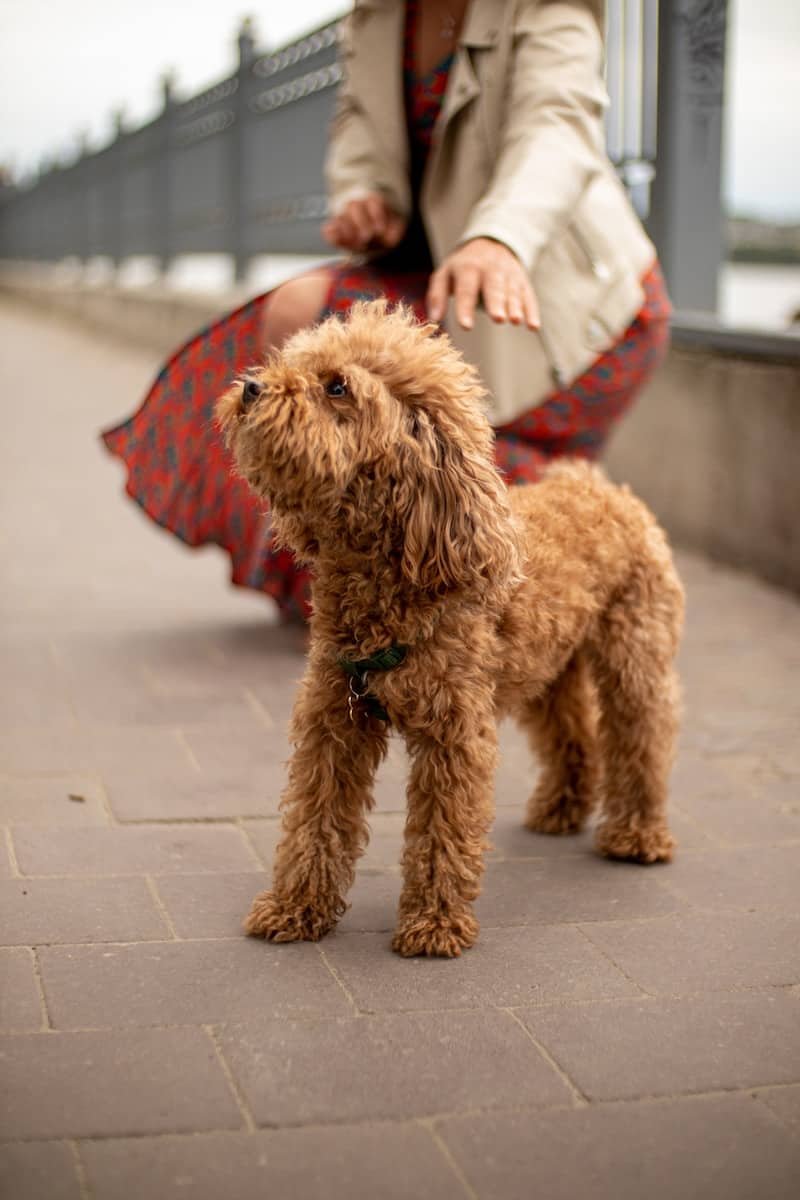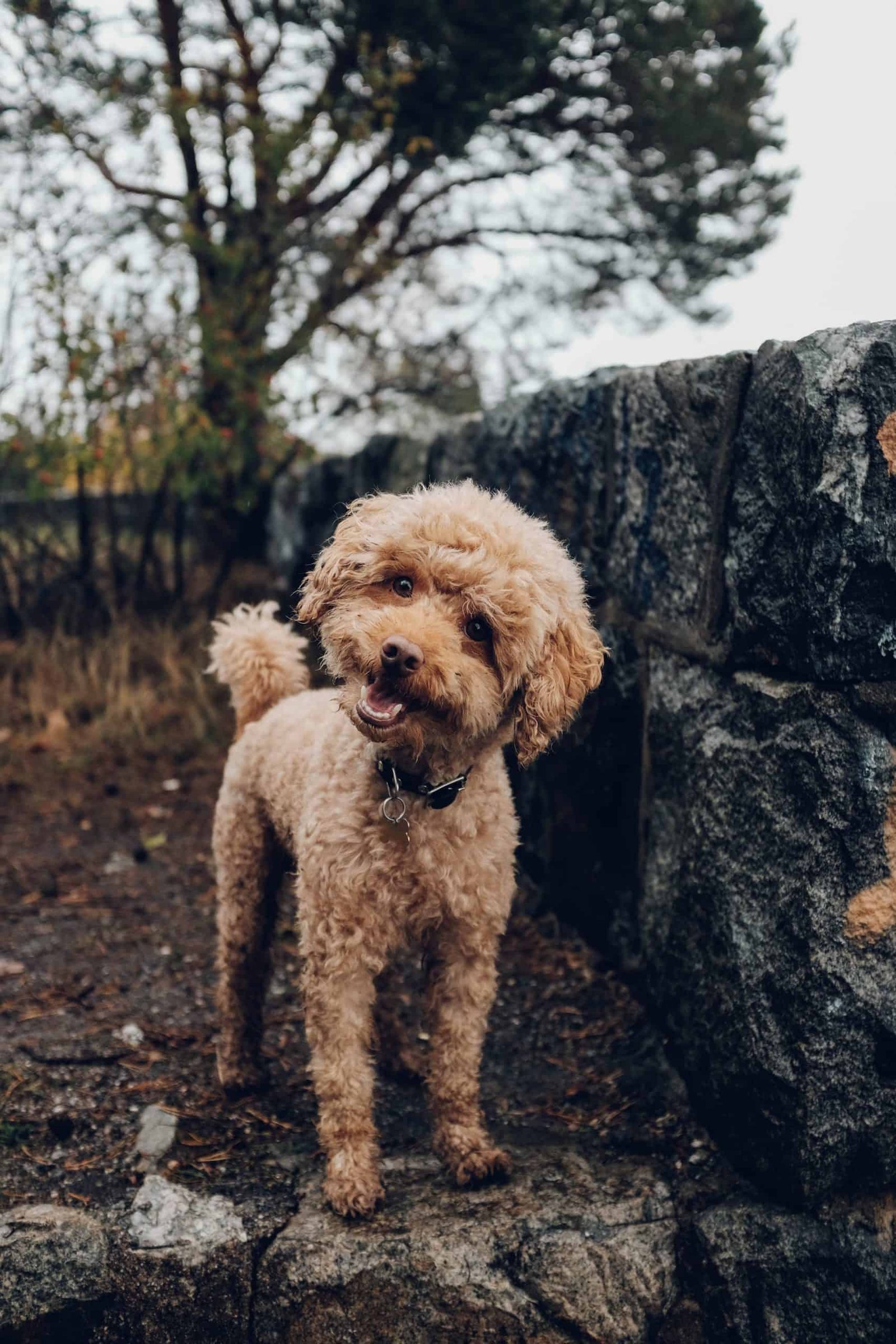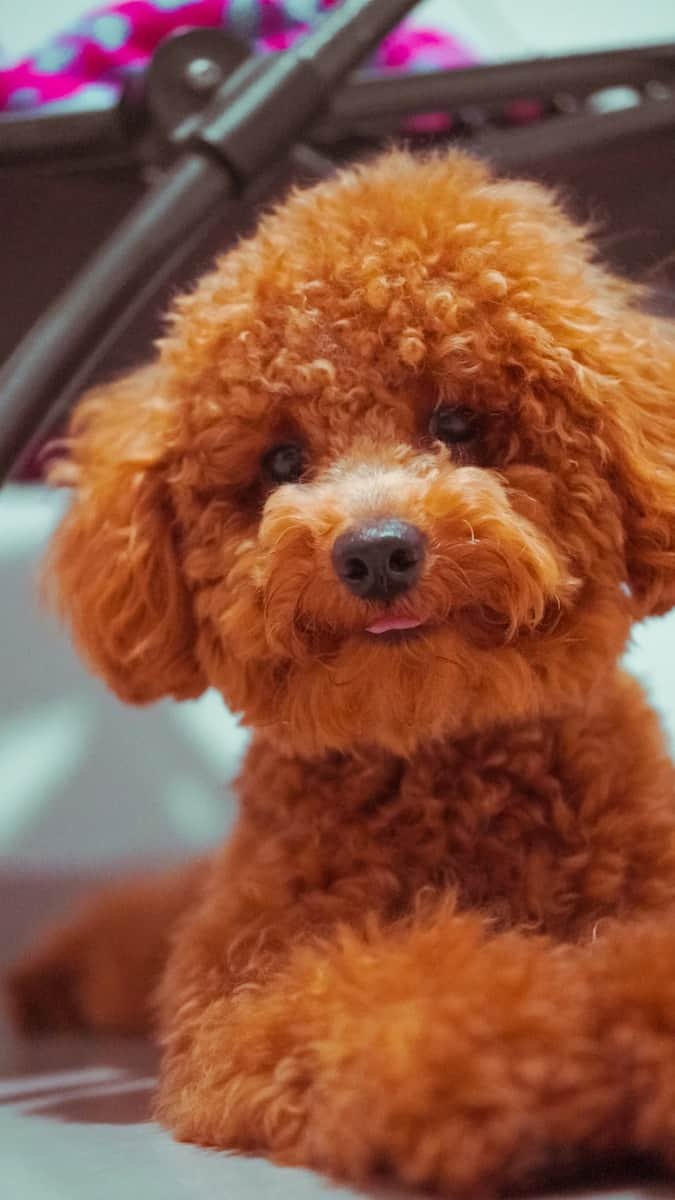
Are you looking for a new furry companion that combines the best of two worlds? Mixed breed dogs with a poodle parent may be the perfect choice for you! These pooches are a unique blend of two breeds that offer a variety of characteristics and traits. In this article, we will explore the most popular breeds that mix with poodles, their characteristics, and all the benefits of choosing one. So if you want to learn more about these amazing four-legged friends, keep reading!
About This Guide
- Real Experience: Written by poodle enthusiasts with years of hands-on experience caring for and training poodles.
- Expert Reviewed: Content verified by certified dog trainers and veterinary professionals.
- Fact-Checked: Information sourced from the AKC, veterinary journals, and breed specialists.
- Last Updated: November 2025
What is a Mixed Poodle?
Mixed poodles are dogs that have one parent of the poodle breed. These pooches combine the characteristics and features of two distinct breeds, offering an array of unique traits. Depending on which parent breeds make up a mixed poodle, they can range in size from small to large, as well as coat type from curly to wiry, and energy levels from low to high. Common examples include Toy Poodles mixed with Chihuahuas, Miniature Poodles blended with Golden Retrievers, Standard Poodles combined with Charles Spaniels or Bichon Frise and Yorkshire Terriers. Mixed poodles also come in a variety of colors and often boast hypoallergenic coats that can be beneficial for pet parents who suffer from allergies.
When choosing a mixed poodle, it is important to consider both parents’ breeds so you know what to expect when it comes to temperament, size and activity levels. These dogs require daily exercise and plenty of mental stimulation because of their active nature. As they make great family pets, they are a popular choice amongst pet owners, looking for companionship and affection. Popular examples include the Australian Shepherd-Poodle mix or the Jack Russell-Poodle hybrid—both of which are sure to bring joy into your home!
Why Choose A Mixed Poodle?
Mixed poodles is a fantastic choice for many pet owners, as they offer the perfect blend of two distinct dog breeds. With their combination of traits, these pooches can range in size from small to large, as well as coat type from curly to wiry. They also come in a variety of colors and often boast hypoallergenic coats that can be beneficial for those with allergies. These active dogs require daily exercise and plenty of mental stimulation—making them an ideal choice for families looking for companionship and affection. Whether you’re looking for a Toy Poodle blended with a Chihuahua or Miniature Poodle combined with a Golden Retriever, there is sure to be the perfect fit for your family!
Popular Breeds That Mix With Poodles
When it comes to hybrid breeds, poodles are a popular choice for pet parents. With their intelligence, low-shedding coats, and charming personalities, these dogs can be mixed with a variety of other dog breeds to create an endless array of pup possibilities. Popular poodle mixes include the Yorkie Poo (Yorkshire Terrier and Poodle), the Cockapoo (Cocker Spaniel and Poodle), the Cavapoo (Cavalier King Charles Spaniel and Miniature Poodle) or Bichonpoo (Bichon Frise and Standard Poodle). These delightful pooches typically have curly coats that come in various colors, ranging from black to white to brown. They also require plenty of exercise, brushing, and mental stimulation – making them great companions for active families looking for a loyal sidekick. Another popular breed mix is the Aussiedoodle, which is an Australian Shepherd blended with a Standard Poodle. These medium-sized dogs boast an energetic nature and high intelligence level – making them well-suited for pet parents who want an obedient pup with plenty of energy!
Golden Retriever and Poodle Mix
The Golden Retriever Poodle mix, also known as the Goldendoodle, is a unique hybrid breed that combines the best of both worlds. These medium-sized dogs have an outgoing and friendly personality that makes them great family pets. They have hypoallergenic coats, which are a great choice for those who suffer from allergies. Along with their intelligence and loyalty, Goldendoodles need plenty of exercise to stay healthy and happy, making them ideal for pet owners who lead active lifestyles. Despite their high energy levels, these pups are very gentle and easy to train – making them an ideal companion for children. As with most hybrids, the physical features of a Goldendoodle can vary depending on which parent breed is dominant in the mix. They usually have a thick coat which can range from wavy to curly—coming in various colors like white, black, or golden brown. If you’re looking for the perfect pup that’s equal parts cuddly and playful – then a Goldendoodle may be just what you need!
Charles Spaniel And Poodle Mix
The Charles Spaniel and Poodle mix, also known as the Cavapoo, is a hybrid breed that combines the best of both parents. This small-sized pup has a gentle and loving personality that makes them great companions for families with young children. Their coats are typically soft and curly, making them ideal for those with allergies or sensitive skin. Cavapoos have an even-temperament that makes them easy to train, which also helps make them an ideal choice for first-time pet owners. Besides their friendly personality, Cavapoos need plenty of exercise to stay healthy and happy, so they’re perfect for active pet parents who love taking their pup out on daily adventures. As with most hybrids, how much each parent breed contributes to the mix can vary greatly—so physical features like coat type and color may range from wavy to curly. If you’re looking for a pup that’s cuddly and playful, then the Cavapoo could be just what you need!
Bichon Frise and Poodle Mix
The Bichon Frise and Poodle mix, also known as the Poochon, is a hybrid breed that combines the cuteness of a Bichon Frise with the intelligence of a Poodle. This small-sized pup has a playful and friendly personality that makes them great companions for families with young children. Their coats are typically curly and hypoallergenic, making them one of the most popular choices for those with allergies or sensitive skin. Poochons have an even-temperament that makes them easy to train – which also helps make them an ideal choice for first-time pet owners. Besides their friendly personality, Poochons need plenty of daily exercise to stay healthy and happy—so they’re perfect for active pet parents who love taking their pup out on adventures. As with all hybrids, how much each parent breed contributes to the mix can vary—so physical features like coat type and color may range from wavy to curly. If you’re looking for an intelligent pup, that’s cuddly and playful – then the Poochon could be just what you need!
Yorkshire Terrier and Poodle Mix
Yorkshire Terrier and Poodle mix, also known as Yorkipoo, is a breed of small and active dogs that combines the intelligence of a Poodle with the playfulness and spunky attitude of a Yorkshire Terrier. These adorable pups usually have long, silky coats that come in shades of black, tan, white, or even grey. Yorkipoos are low-maintenance in terms of grooming and they shed little—which makes them ideal for those who suffer from allergies. They have an energetic personality that requires plenty of exercise to stay happy and healthy. Yorkers are friendly but can be territorial around strangers if not properly socialized. They make great companions for those looking for an easy-going yet attentive pet. As with all mixed breeds, their physical appearance will vary depending on which traits they inherit from each parent breed—so there’s no guarantee what kind of look you’ll get! Whether it’s an outgoing pup or a more laid-back one – the Yorkipoo is sure to bring joy into your home!
Australian Shepherd and Poodle Mix
Australian Shepherd and Poodle Mix, also known as Aussiedoodle, is a breed of medium-sized dogs that combines the intelligence and loyalty of an Australian Shepherd with the playfulness and energy of a poodle. These pups usually have curly coats that come in shades of white, black, or brown—they shed little, which makes them ideal for those who suffer from allergies. Aussiedoodles are highly intelligent and require plenty of mental stimulation to stay happy and healthy. They make noble companions for those looking for an active yet loving pet. As with all mixed breeds, physical appearance will vary depending on which traits they inherit from each parent breed – so it’s impossible to predict what kind of look you’ll get! Whether it’s a calm pup or an energetic one – the Aussiedoodle is sure to bring joy into your home!
Jack Russell and Poodle Mix
Jack Russell and Poodle Mix, also known as Jackadoodles, is a breed of small-sized dogs that combines the intelligence, playfulness, and loyalty of the Jack Russell with the energy and hypoallergenic coat of a poodle. These dogs have coats that can range from wavy to curly in shades of white, black or brown. They are low-shedding, which makes them an ideal choice for those with allergies or asthma. Jackadoodles need lots of exercise and are great for active pet owners. As with all mixed breeds, physical appearance will vary depending on which traits they inherit from each parent breed – so it’s impossible to predict what kind of look you’ll get! Whether it’s a quiet pup or an excitable one – the Jackadoodle is sure to bring joy into your home!
Characteristics of Mixed Breed Dogs with a Poodle Parent
Mixed breed dogs with a Poodle parent are becoming increasingly popular as a pet choice for many pet parents. They have a variety of physical characteristics and a great combination of personality traits from both the Poodle and the other parent breed. These dogs usually boast a curly coat that is low-shedding, making them ideal for owners who have allergies. They have plenty of energy and enjoy getting plenty of exercise each day to stay healthy and happy. Mixed breed dogs with a Poodle parent can vary in size and color, making them suitable for any home! From Toy Poodles to Standard Poodles—these pups make a great companion for anyone looking for an all-around loving dog.
Curly Coats
Curly coats are one of the most distinctive features of mixed breed dogs with a Poodle parent. Many of these pups have a unique coat that is both low-shedding and hypoallergenic, making them ideal for pet owners with allergies. Whether it be a miniature poodle, Toy Poodle, Standard Poodle or any other parent breed, these dogs will have some curl in their coat. As far as color goes, it typically depends on which breeds the pup inherits from—from golden retriever to Charles spaniels. They can come in many shades! Also, these pups require regular grooming to help keep their curly coats looking healthy and well maintained. With daily brushing and occasional trims they can look just as good as any other purebred dog!
Hypoallergenic Coats
Hypoallergenic coats are an attractive feature of many mixed breeds with Poodle parentage. Many people who suffer from allergies to dog dander and hair can benefit from a pup whose coat is low-shedding and not prone to causing allergic reactions. Common hypoallergenic breeds include the Bichon Frise, Yorkshire Terrier, Australian Shepherd, and Jack Russell. For pet parents looking for a pup with a more unique look, there are plenty of mixed breeds that can provide the same benefits of a hypoallergenic coat. A combination of the above mentioned parent breeds with a Standard Poodle or Miniature Poodle will cause a pup that has both the look you want and the low-shedding qualities you need. For these pups to keep their hypoallergenic coats, they will require regular brushing and occasional trims. And don’t forget to give them plenty of exercise too—as any breed of dog needs daily exercise for optimal health!
Energy Levels
When it comes to finding an energetic pup, a mixed breed with poodle parentage can be an excellent choice. The Standard Poodle is known for its high energy levels and they are often crossed with other active breeds, such as Golden Retriever, Labrador Retrievers, and Charles Spaniels. These combinations can make for a pup that loves to play but also has the intelligence and trainability of the Poodle. High-energy mixed breed dogs need more exercise than calm ones, making them great running companions. Pet owners should note that even though these pups have higher energy levels, they still need plenty of mental stimulation besides physical exercise. Providing them with plenty of toys and puzzles can help keep them entertained when they aren’t getting enough physical activity. With the right amount of care and attention, these mixed breed dogs can make great companions who will provide years of love and loyalty.
Daily Exercise Needs
Mixed breed dogs with Poodle parentage may have more energy but still require daily exercise for their well-being. Pet parents should plan on providing at least two hours of exercise for their pup each day. This can include a mix of physical activity such as walking, running, or playing fetch, as well as mental stimulation from interactive toys or puzzles. Providing plenty of exercise will not only help keep your pup fit and strong, but it can also help reduce the risk of developing problem behaviors because of boredom or lack of stimulation. Exercise is an important part of any dog’s life and pet owners should make sure that their pup gets enough physical and mental activity each day for optimal health and wellbeing.
Plenty of Exercise for Pet Owners
Having a pet can provide unconditional love and companionship, but it is important to remember that with any pet comes responsibility. Providing your pup with plenty of exercise each day is an essential part of being a responsible pet owner. Exercise can help keep your pup healthy both physically and mentally and can also help prevent problem behaviors from developing. Not only exercises benefit your pup’s health, but it is also beneficial for pet owners as well. Going for walks or runs with your pup gives you the opportunity to bond and can be a great way to get some fresh air and get some exercise yourself. For those short on time, having interactive toys or puzzles available for your pup can provide mental stimulation when physical activity isn’t possible. Regular exercise is beneficial for both pets and their owners, so make sure you plan enough time each day to give your pup the activity they need.
Types of Mixed Breed Dogs with a Poodle Parent
Mixed breed dogs with a poodle parent are becoming increasingly popular, and for good reason. These breeds often have the intelligence, playfulness, and affection of a poodle combined with the unique characteristics of the other parent breed. Mixing toy and miniature poodles with small breeds like Yorkshire terriers or Bichon Frises creates family-friendly pets with low energy levels and hypoallergenic coats. Curlier coats can be found in mixes such as the Charles Spaniel and Poodle or even the Golden Retriever and Poodle. Mixed breed dogs that contain a Standard Poodle parent offer more exercise needs than smaller options but can also provide pet parents with an energetic companion who loves to learn new things. Popular choices amongst this type of mix include the Australian Shepherd and Standard Poodle or Jack Russell and Standard Poodle. Whatever your choice may be, mixed breed dogs with a poodle parent offer something special for pet owners looking for an intelligent, loving pup to become part of their family.
Toy Poodles
Toy Poodles are a breed of small, intelligent dogs that have been beloved by pet owners around the world for centuries. These lovable companions have a coat that come in many colors and textures, ranging from silky to curly. Toy Poodles have an average life span of 10-18 years and make great family pets because of their low energy levels and hypoallergenic coats. They require daily exercise, such as walks and playtime, to keep them healthy and happy, but don’t need as much exercise as larger breeds.
Toy Poodles are known for their intelligence, making them easy to train with patience and consistency. Their friendly nature makes them excellent social companions who enjoy meeting new people. Despite their small size, they can offer plenty of protection against intruders because of their loud barking when something doesn’t seem quite right.
With all these qualities combined, it’s no wonder why Toy Poodles are one of the most popular breeds today!
Miniature Poodles
Miniature Poodles are smaller versions of Standard Poodles, but they’re just as intelligent and loyal. They come in a variety of colors, including black, white, apricot, and silver. Miniature Poodles make excellent family pets because of their friendly nature and low energy levels; they don’t require as much exercise as larger breeds, although some daily activity is still recommended to keep them healthy.
These smart dogs are easy to train, making them perfect for new pet owners or those who want a well-behaved dog. Miniature Poodles enjoy meeting people and other animals due to their social nature, but can also offer protection against intruders with their loud barking when something isn’t quite right. Miniature Poodles are becoming more popular as pets due to their hypoallergenic coats and loving personalities, whether you want a companion or a playmate for your current pet.
Standard Poodles
Standard Poodles are a large breed of dog that is highly intelligent and loyal. They come in a variety of colors such as black, white, brown, apricot, and silver. Standard Poodles are known for their curly coats which make them hypoallergenic. They also have an independent streak which can be used to their advantage during training; with the right amount of patience and consistency they can become obedient dogs that excel in obedience classes.
Standard Poodles require plenty of exercise to stay healthy; a daily walk or jog is recommended to keep them in shape. They also enjoy playtime with other dogs and people thanks to their social nature. As long as they receive the proper attention they need Standard Poodles make excellent family pets. Whether you’re looking for a companion or just a playmate for your current pet, Standard Poodles are sure to fit the bill!
Benefits of Choosing a Mixed Breed Dog that Includes a Poodle Parent
Mixed breed dogs, also known as designer dogs, have become increasingly popular over the years. When you combine two different breeds of dog, such as a poodle and another breed, you can create some interesting and unique characteristics that are a great fit for many pet parents. Poodles are highly intelligent and loyal, making them an excellent choice for any family. They also have hypoallergenic coats that reduce allergic reactions.
Dogs that are a mix of Poodle and another breed can have the Poodle’s smarts and loyalty, along with other traits from the other parent. This combination makes them suitable for many types of homes and lifestyles. For example, an Australian Shepherd mixed with a Standard Poodle will likely be an active, high-energy companion perfect for those who enjoy outdoor activities like hiking or running. By crossing a Toy or Miniature Poodle with a Cavalier King Charles Spaniel, you get a relaxed and affectionate dog, perfect for families who want a lapdog.
No matter what type of pet parents you are, there is sure to be a mixed breed dog out there with enough energy levels and temperament to suit your lifestyle. So if you’re looking for something unique but still want all the benefits of owning a pup with poodle parentage, then consider adopting one today!
Explore All Poodle Mixes
Looking for a specific poodle mix? Browse our complete collection of poodle crossbreed guides:
Popular Doodle Mixes
- Mini Goldendoodle Mix – Golden Retriever + Poodle
- Adult Mini Goldendoodle – Perfect for Small Spaces
- Shepadoodles – German Shepherd + Poodle
- Bordoodles – Border Collie + Poodle
- Boxerdoodles – Boxer + Poodle
- Dalmadoodle – Dalmatian + Poodle
- Huskydoodle – Husky + Poodle
Small Poodle Mixes
- Chihuahua Poodle Mix (Chipoo)
- Poodle Chihuahua Mix Guide
- Beagle Poodle Mix (Poogle)
- Pomapoo – Pomeranian + Poodle
- Terrier Poodle Mix
- Corgi Toy Poodle Mix

